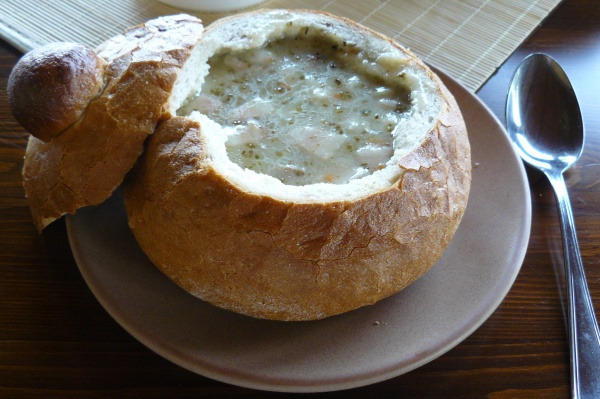Facts About North Slavic fermented cereal soups
In West Slavic countries and Belarus, traditional soups made from fermented cereals like rye, wheat, or oatmeal hold a special place in culinary traditions. In Poland, one such beloved soup is żur, crafted from soured rye flour and meat. It is often served with boiled potatoes or, for a delightful twist, in an edible bread bowl. Meanwhile, in Belarus, a similar soup known as zhur is prepared using fermented oatmeal or rye.
The Czech Republic boasts its own version called kyselo, a hearty soup that originates from the Krkonoše mountain region. Kyselo has been nourishing the people of this area for centuries, providing the energy needed for the demanding mountain lifestyle. This soup is made with locally sourced ingredients such as mushrooms, sourdough, and potatoes. The recipe can vary from family to family, with some adding eggs while others do not. Kyselo is typically served hot, either in a soup plate or a bread bowl, and often garnished with fresh green herbs. It can be a filling main course or served in smaller portions as an entrée.
Beyond these regions, other Eastern European cuisines also feature soups based on soured flour or fermentation. For instance, Russian okroshka, Romanian borș, and Finnish hapanvelli are all variations on this theme. Even Japanese miso soup, with its fermented miso paste, could be considered a distant relative.
Kyselo and żur are not just about nourishment; they are steeped in local folklore and traditions. They play a significant role in cultural narratives and remain a cherished part of popular culture, connecting generations through shared culinary heritage.

 Slovakia
Slovakia